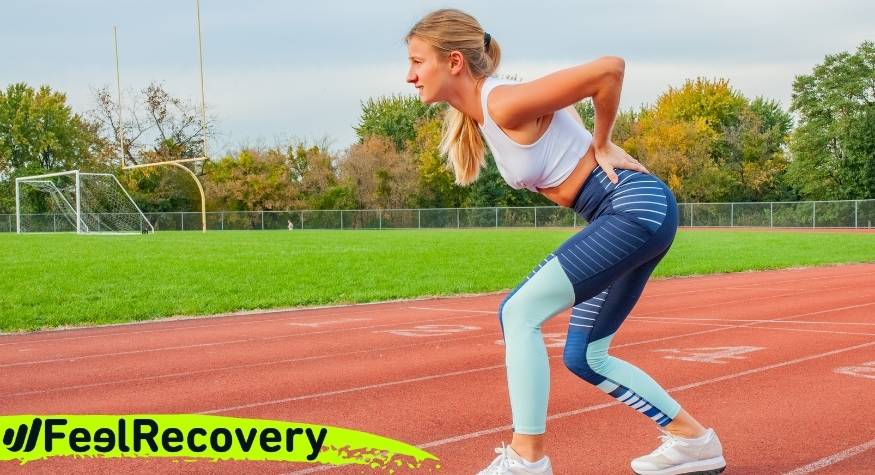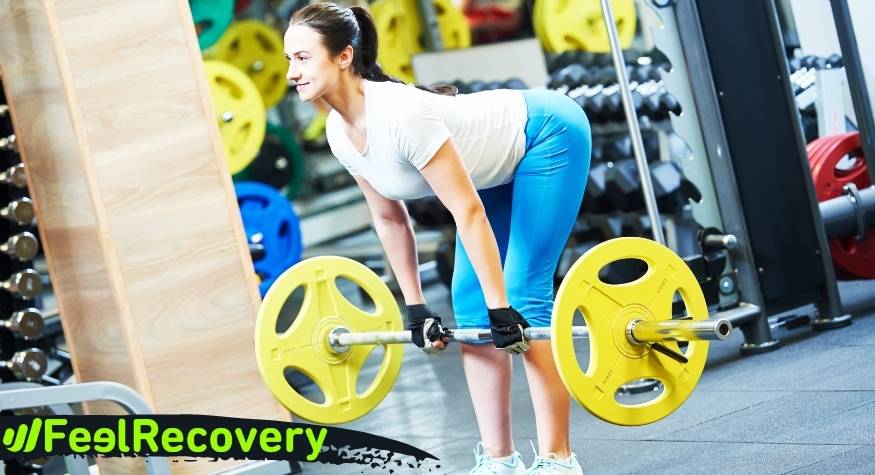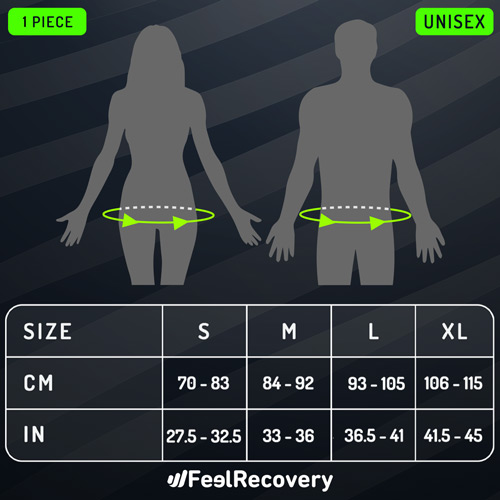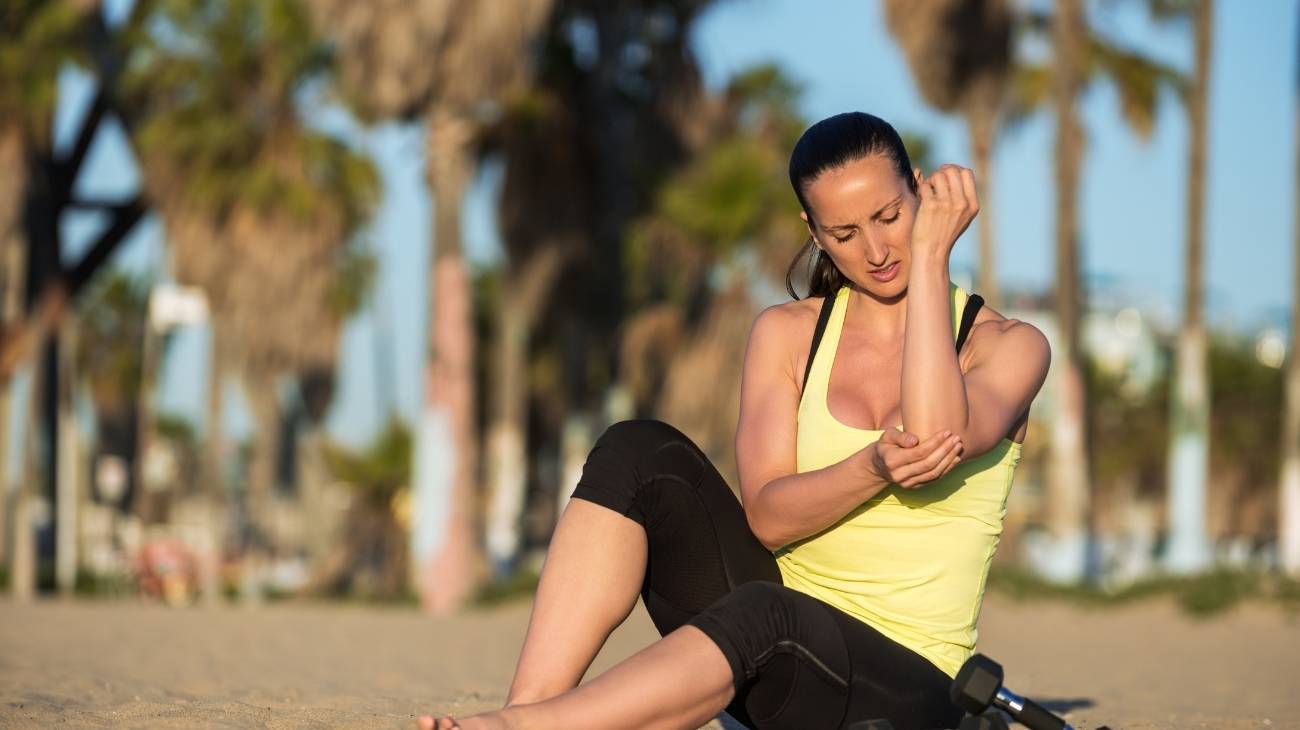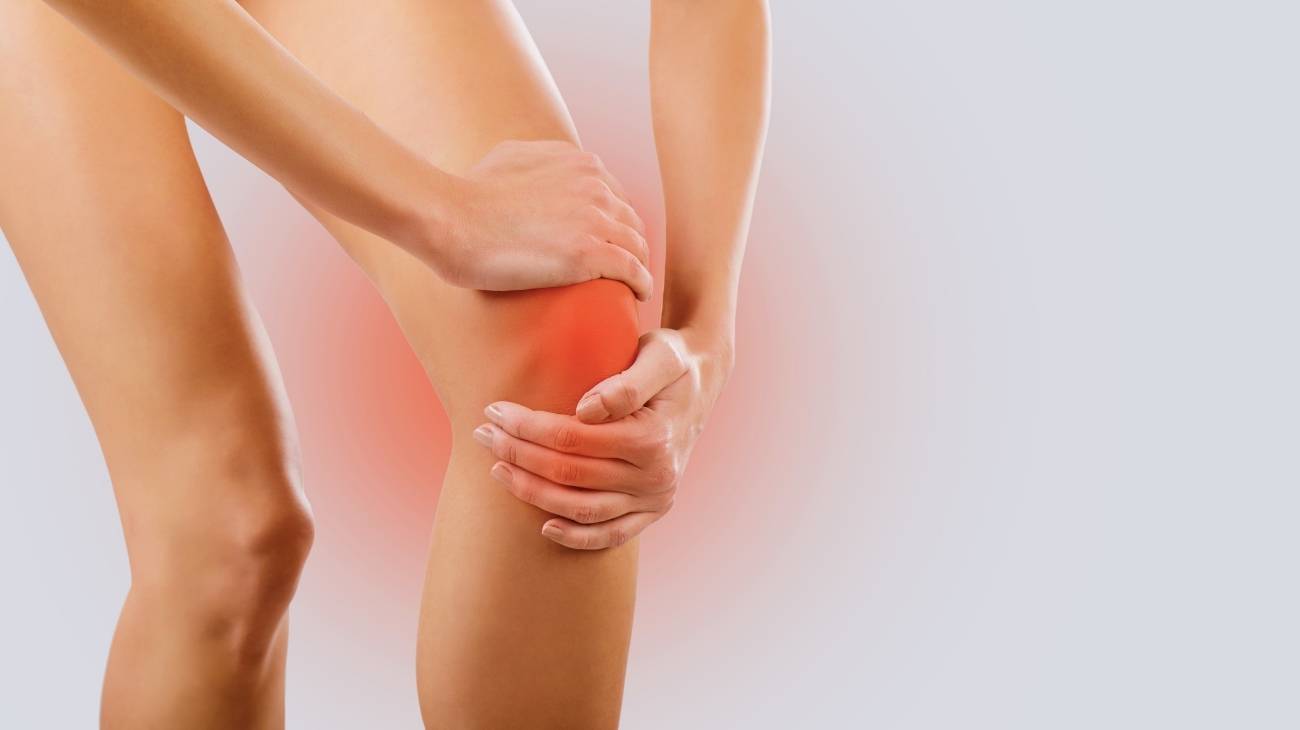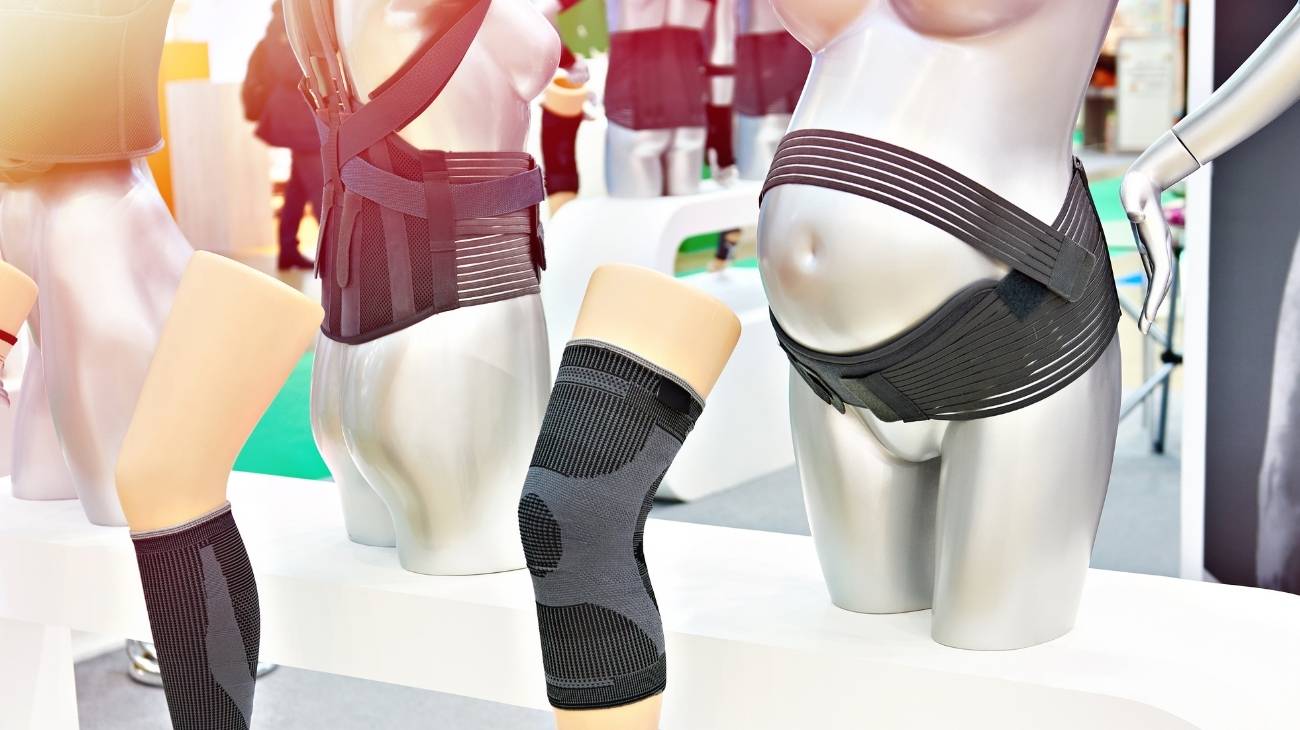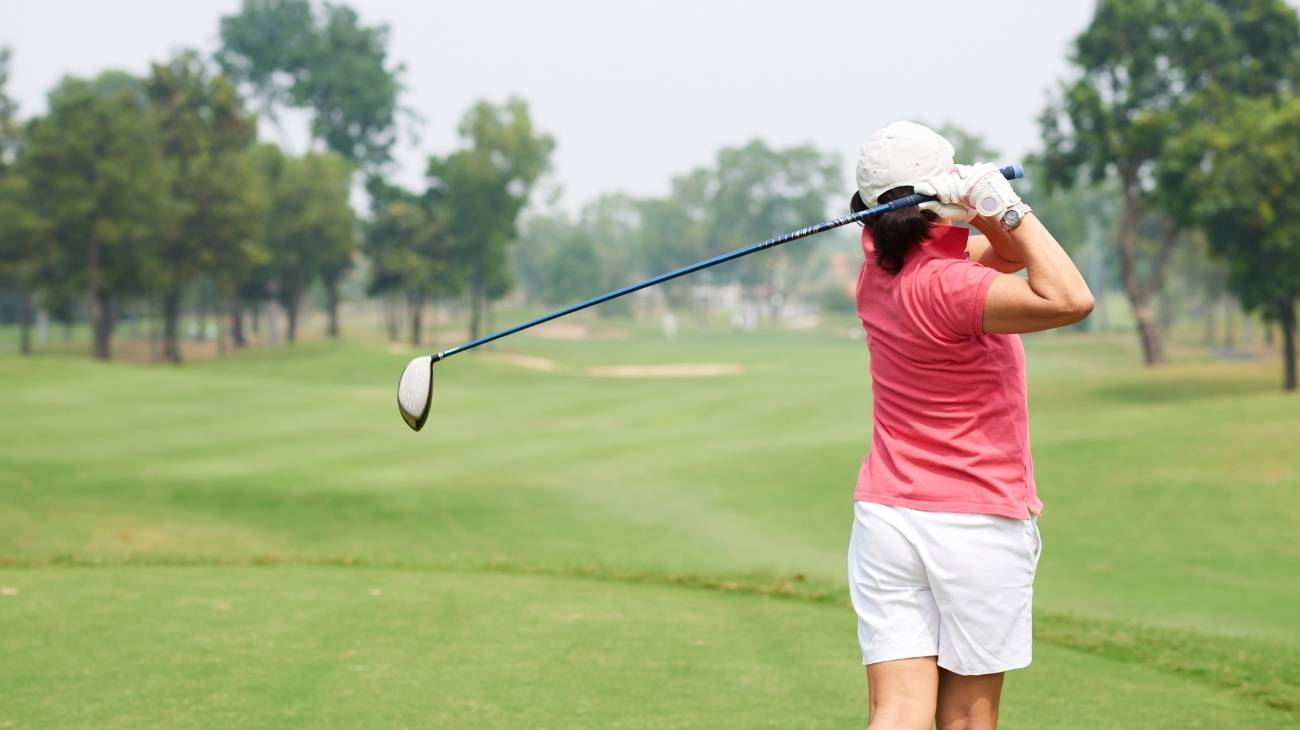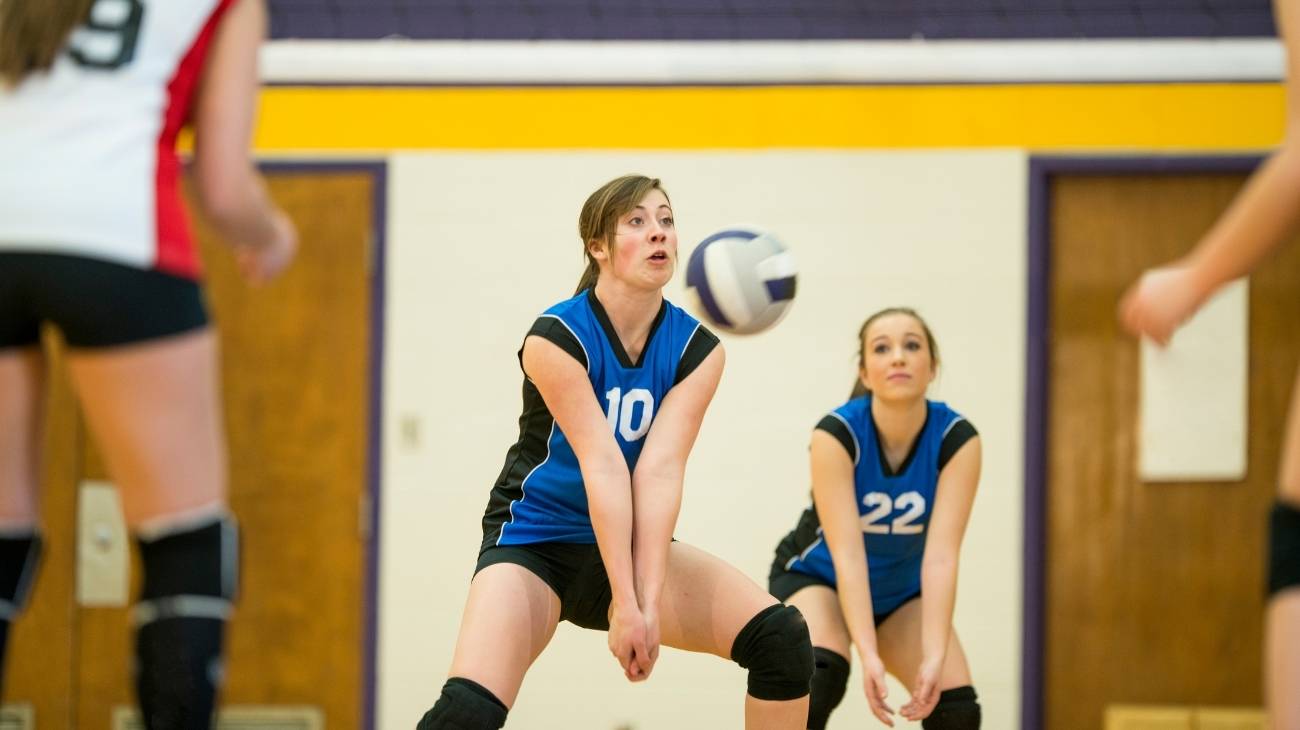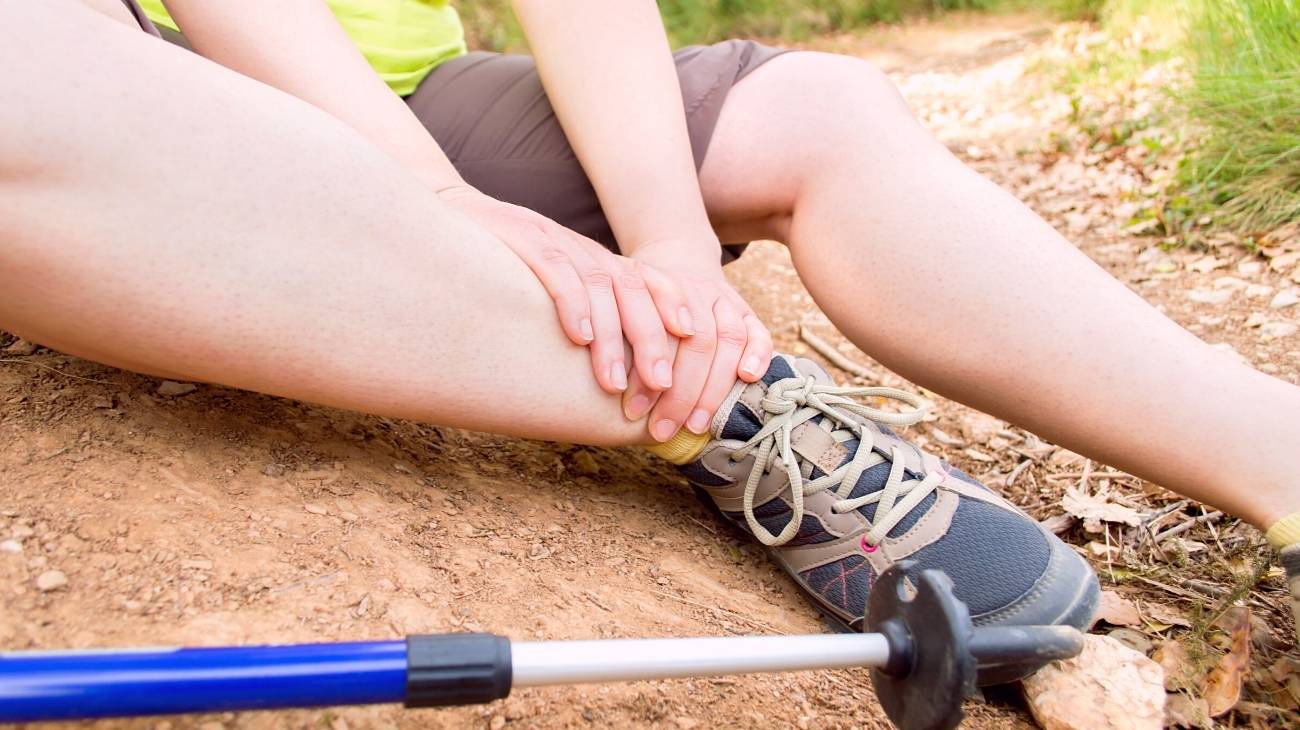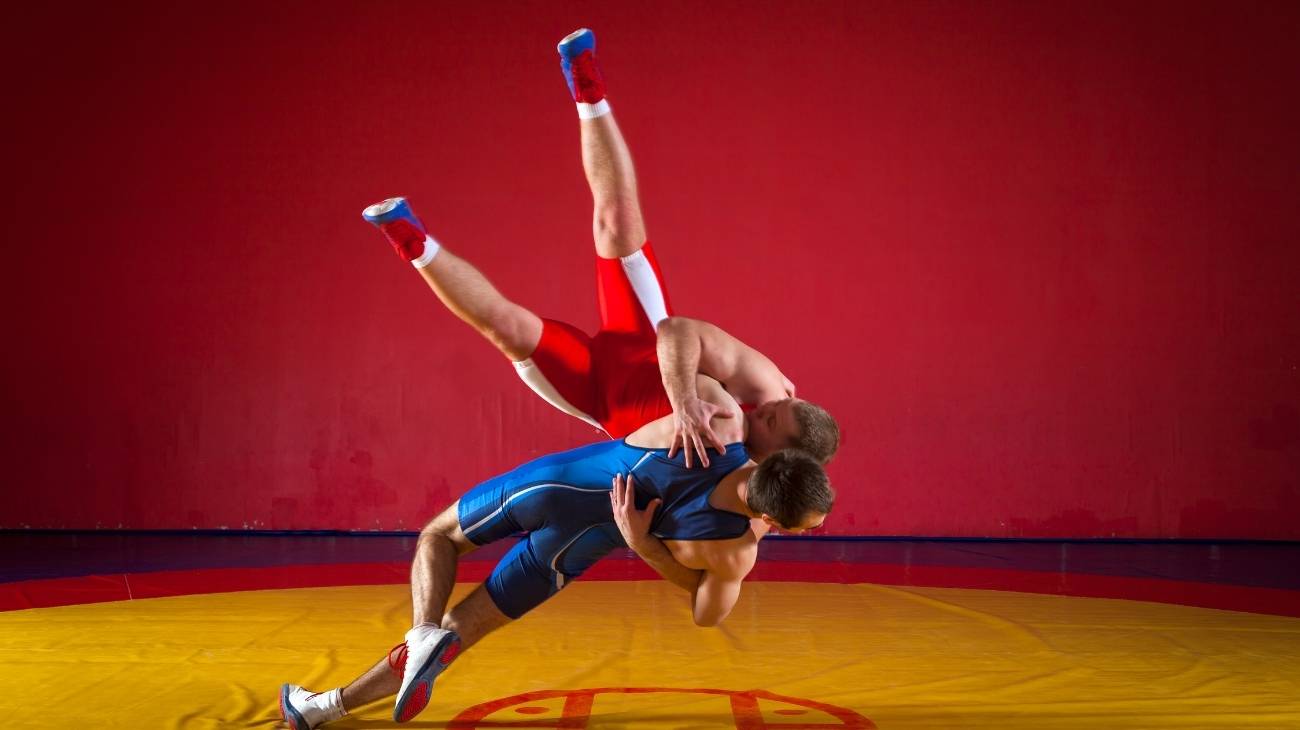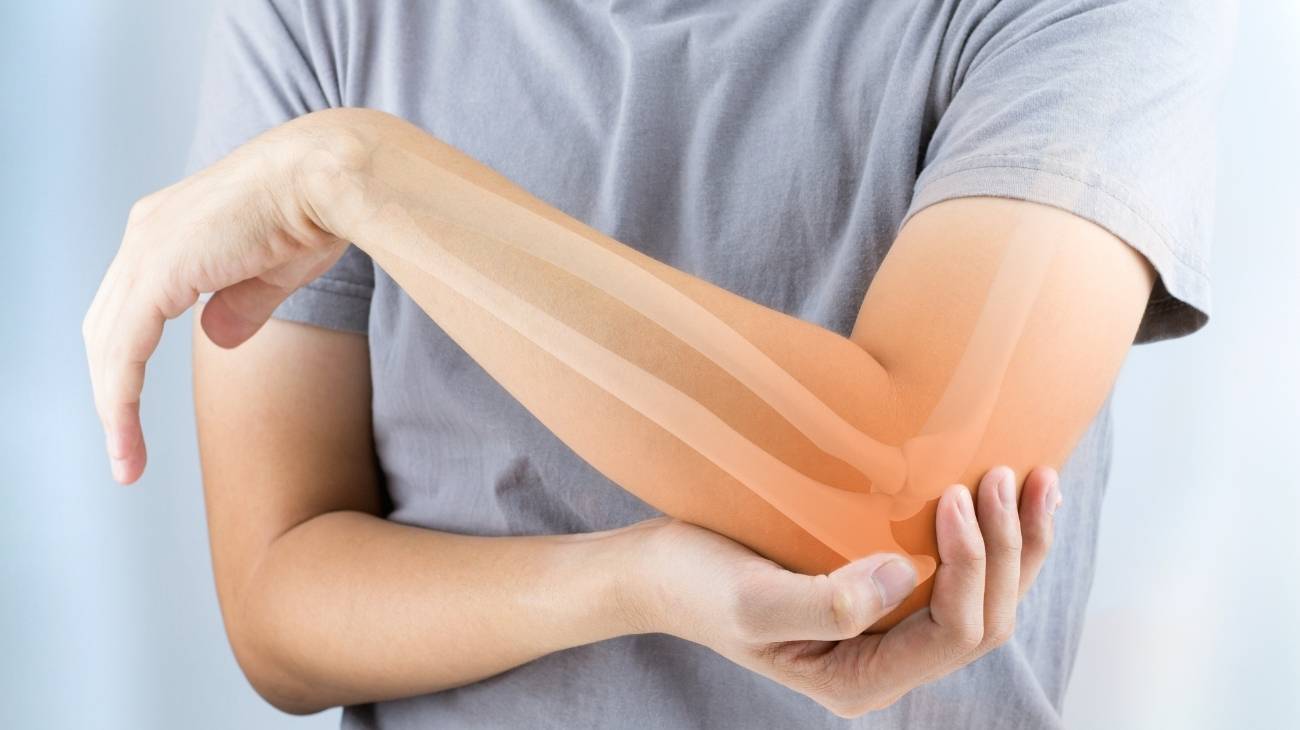Sports back braces are accessories designed with elastic materials and are used during sporting activities. Over the years, they have gained a lot of popularity among athletes of different disciplines, due to their benefits of protection and recovery of the lumbar area.
Before making a purchase, different aspects of the garment should be evaluated, in this case we will provide all the necessary information such as: types of support belts, their characteristics, and even the most common back injuries and how they occur in each sport, so that you are always forewarned.
What are the most common back injuries in sport?
Back injuries can appear in different ways. It is common in the daily activity of any athlete, they can be the result of a wrongly exerted force, bad posture, among other reasons. Depending on the magnitude of the lumbar damage, it can affect the vertebrae, spinal discs and ligaments to the point of losing partial or total mobility of the lower limbs. If not treated in time, it can lead to other health complications.
The following information can help to clarify many doubts on the subject. It is a detailed list of the most common back injuries, together with their symptoms, general causes and also how they can occur in sport.
Low back pain or lumbago
This is a condition of the lumbar area or lower back that can be acute, sub-acute or chronic and may occur in physical activities and sports due to violent and repeated twisting movements of the trunk, poor posture and excessive weight bearing, and can affect the muscles and ligaments of the vertebrae.
Symptoms start with pain, severe muscle spasms, palpitation and can extend to the legs, depending on the severity it would affect the time of any mobilisation during sports. A general example for any sport could be that of a novice with excess weight; a person with little or no experience in the area can execute a bad movement and injure their back.
Muscle contractures
This is an annoying injury that can affect anyone in their daily activity or sport, it is an involuntary contraction of the muscles in the lower back or lumbar area, it can prevent you from making normal movements, it is a consequence of excessive activity or lack of warm-up. In this case, the body is not able to discard the metabolisms and the muscle loses the ability to return to a resting state.
Signs of the condition begin with inflammation and soreness of the muscles, limited mobility and weakness. For example, when a tennis player is playing against an opponent and twists the trunk to return the ball, this repeated movement directly affects the lower back and can lead to muscle contracture and inability to move easily.
Lumbar impingement
Occurs when excessive pressure is placed on one or more vertebrae, this condition can extend to the legs. It may be caused by repeated exertion from physical activity, poor posture over a long period of time, overweight, excessive lifting, among other reasons. Sufferers will hear a crunching sound in the lower back.
The signs of injury can vary depending on the severity of the injury; at first it will be a discomfort accompanied by pain, tingling, muscle spasm and weakness; if left untreated, the ailment can gradually increase until the mobility of the lower limbs is impaired. The clearest example is an athlete lifting weights, often exceeding their physical capabilities, to this can be added excess weight and poor posture, after lifting the weight, you will hear almost immediately the crackle of the vertebrae.
Lumbar arthrosis
It consists of the progressive degenerative degeneration of the cartilage that covers the surface of the joints, this soft tissue serves as a kind of shock absorber between the bones, in the case of the lumbar area it affects the vertebrae. As the cartilage weakens, it can reach the point of rubbing against the bones and cause other types of injury. It occurs due to poor posture, excessive activity load, and despite being degenerative, it has a very high rate of affecting tennis players and other athletes.
Symptoms begin with pain in the lower back during sporting activity, cramping and numbness in the limbs, stiffness, loss of flexibility or mobility. In the case of a basketball player, arching and flexing the back rapidly and repeatedly throughout the game, over time the vertebrae weaken and cause osteoarthritis.
Lumbar sprain
Ligaments or muscle tendons help to hold the vertebral discs together. In this case, a lumbar sprain is the stretching, cracking or tearing of the ligament, which occurs when there is violent twisting or activities with constant tension over a long period, poor posture, lack of warm-up exercise and lifting weights above the head.
It can present with acute pain, bruising, swelling of the affected area, bruising and temporary loss of mobility, the symptoms appear in the initial phase of the injury and could become more complicated if left untreated. An example is that of a basketball player, when he makes sharp turns in the air to block or pass to teammates, these actions directly affect the lower back, causing a sprain.
Bestseller
In which sports and physical activities is it common to injure your back?
Nowadays, there is a wide range of physical activities and sports practised in natural environments or in controlled environments. Many of these practices are considered extreme and can push any person to the limit, to the point of causing back injuries.
These can be specific to the discipline being practised, being in most cases the product of poorly executed technique or posture, repetitive movements and may occur at the least expected time. The following list lists the sports most likely to cause back injuries.
Running back braces: The back pain that an athlete suffers during this sport usually happens because when running you have to do some light but repetitive jumps. If you run causing these vibrations for a long period of time, it will directly affect the back and other extremities, causing mild or intense pain, depending on the case.
Golf back braces: There are cases where the hole is very far away and you have to turn your trunk with some force to hit the ball with the club, this repetitive and abrupt movement over time weakens the muscles and ligaments in the back and can cause negative consequences in the lumbar area.
Weightlifting and fitness back braces: In this group of sports, many back injuries occur when starting a new exercise routine with poor posture, excessive weight lifting and lack of warm-up exercise, at the time of execution the lower back is the most affected.
Back supports for heavy loading and unloading work: All work of loading and moving material has its degree of complication, some jobs do not meet the minimum standards of protection for the person to work normally, to this must be added the lack of training, supervision and poor posture when you are going to lift, hold or move heavy materials, can cause instant or in the future, serious repercussions on the back.
Back braces for bad posture in the workplace: Some jobs are performed sitting on a chair handling machinery or other tasks, the complication begins when the same activity is repeated in a position that can become uncomfortable after a short time. This repeated movement, combined with strain, can weaken muscles and ligaments, leading to back injuries.
What type of lumbar supports are best for sports injuries?
Lumbar supports are considered by many sports professionals as the best alternative to prevent, reduce or treat lumbar injuries. They are frequently used in high-impact physical and sporting activities due to their effectiveness.
There are back braces with different shapes, colours and sizes, they can be classic, sports and reinforced, each one is designed with different materials and alloys to fulfill a specific function, it is only a matter of choosing the right one according to the type of injury. The following list of lumbar supports and belts for sports injuries are a reference for many users due to their excellent compression, support and protection.
Sports lumbar braces
An effective way to protect the back from sports injuries is with the use of lumbar supports. These garments have a comfortable, firm and ergonomic design, with elastic adjustments for a personalised compression, keeping the spine aligned, avoiding stiffness, eliminating all tension in the back, thus having a therapeutic effect on the lumbar area to prevent and protect it from injuries caused by the execution of any sport.
You can use it for any occasion, especially for training with heavier weights than usual, as well as squats with load. Highly recommended for weightlifters and weightlifters, as it greatly improves technique, and in any sport, you can maintain a good posture, taking care of your back, increasing performance and achieving a quick recovery.
Sacroiliac belt
These belts apply compression, generate stabilisation, improve blood circulation which causes a reduction of inflammation, pain relief and a quick recovery from injuries that were produced in both joints of the sacrum and iliac bones.
Its design is much more reduced, in comparison with the rest of back braces, making it one of the favourite garments of sportsmen and women, as it can be used under or over clothing, to carry out training sessions, matches or physical activities without restrictions or inconveniences. The area will be protected at all times, also reducing muscle spasm and preventing the reappearance of already healed traumatisms.
It should also be noted that the sacroiliac belts are made with different fastening materials, such as hooks, straps, Velcro, among others, providing a better adjustment in the area and achieving a greater benefit to the athlete, since he/she will be able to make a personalised pressure according to his/her needs.
Flexible lumbar support belts
The lumbar spine is located in the lower back, and these belts have great benefits to keep this area of the body in good condition. They were created with flexible materials such as cotton, neoprene and elastic fibres, in order to generate a proper fit and easy placement, being possible its use in sports practices for the prevention of lumbar accidents.
Although, it should be clarified that its use should be under specific training, with maximum loads or exercises that may affect the structure of the spine. Recommended for sports such as basketball, rugby, tennis, among others.
Now, its design holds the lumbar area, provides stability and compression, achieving a quick recovery if you have suffered injuries and pain relief, because the muscles will be in constant rest, even if you are using it. Despite this, you will not have a restriction of movement.
Rigid back supports
Unlike the rest of braces or belts, this garment generates a much greater limitation of movement, so its use is often for postoperative cases of back, fractures, instability or severe pain. It is generally recommended for use by therapists or specialists in the field.
The materials may consist of sturdy plastic or metal bars that are placed on the outer area of the lumbar brace. They also use straps for torso wrapping, and rigid panels that may be located in the front area of the garment, in the back, and in some cases on the sides of the brace. It also promotes good posture of the spine, relief of pressure on the joints and reduction of muscle tension.
As this is an orthopaedic device, it should be consulted with the trainer if the athlete could use this type of sling for training purposes, perhaps for more specific exercises or practices that may require it, as it should be remembered that they are limited in their movements.
Semi-rigid back supports
Semi-rigid back braces are a combination of rigid and flexible braces, which can combine the major benefits of both garments to create a highly functional orthosis. Materials may include moulded plastics or additional padding which may provide much greater stability to the area, limiting movement and increasing the healing process of the injury.
It is also noted for treating moderate to mild pain, either after a strenuous physical workout or after surgery, which helps to maintain the abdominal area and can be worn with regular underwear. It contains the pouches providing support to the musculature, for both men and women. A garment that provides comfort and stability in every movement. They are usually comfortable designs, easy to use and rigid fastening, with an elastic, hypoallergenic and discreet fabric.
What features should you consider before choosing the best sports back brace for men or women?
To choose the best lumbar support, you must first take into account the type of sport, physical or daily activity you do, and then take into consideration features such as design, material, support and more, which will define your experience and the results obtained by the compressive garment.
Depending on the sport
Each sport requires a series of safety accessories with specific characteristics to be able to perform them, one of those articles is the compression sports belt to protect the lumbar area of any injury, being the sports named below, which are more prone to accidents in the back, and therefore the use of the compressive garment is almost indispensable.
- Running: When you run at your maximum capacity, more than two hundred muscles are activated, the spine and cervical spine are subjected to a lot of stress and if combined with poor posture, it can cause pain in the lumbar area due to the intensity of the activity. To prevent this, a sacro-iliac belt is required which, as well as being comfortable for running, will reduce the ailment.
- Golf: It is believed that golf is a sport with a low percentage of injuries, but this is not the case with the back, as the trunk must be rotated, and many times this is done abruptly, generating consequences in this area and requiring a compressive garment for both prevention and recovery.
- Crossfit: This is perhaps the most efficient way of exercising all the muscles of the body. However, it involves a lot of repetitive movements that can weaken and strain the lower back. You will need to wear a lumbar support to keep your spine aligned, so that you can perform the exercise correctly and safely.
- Weightlifting and fitness: One of the basic movements in these disciplines is to lift weight above the head, the problems with injuries are due to a poorly implemented technique, lack of warm-up exercise or poor posture, but all that can be avoided with lumbar belts, as they are specially designed to work with weight, and still maintains a correct position and support of the joints.
- Heavy loading and unloading work: Any heavy loading and unloading work has its degree of complication, being of utmost importance the use of garments that help to avoid discomfort in the back, due to the direct impact that is constantly exerted in this area. Products such as the lumbar girdle are ideal for you to always maintain the stability you need.
- Bad posture in the workplace: There is a limit point in any part of the body, since making the same movement or having a bad posture will generate greater consequences, pain being one of the main causes, and with these lumbar garments you will be able to avoid and heal.
Manufacturing material
Over the years, the manufacture of sports back braces has evolved to provide the user with better effects and a more pleasant experience with the product. Latex, microfibres, nylon and other synthetic materials work as thermal insulation, absorb large quantities of liquids, keep the device in place and adapt to the body's build.
- Latex: It comes from the hevea tree, its initial texture is watery and yellowish, it goes through a chemical and refining process to have a firm consistency. It is extremely elastic, resistant and light, for this reason it is included as a material in compression garments to treat lumbar injuries.
- Micro fibre: It is a synthetic material, composed of micro fibres one hundred times thinner than human hair, it is resistant, comfortable to the touch, light and can maintain its original shape over time, which is why athletes prefer it.
- Nylon: It is a synthetic fibre with multiple uses in the sports field, its characteristics include moisture absorption, strength and flexibility. It does not wrinkle or deteriorate, it is ideal for use as reinforcement in belts.
- Neoprene: It is obtained through the polymerisation of chloroprene. You will be able to fold it or make any handling of this material without losing its initial shape, ideal to protect from low or high temperatures, it is flexible and very resistant. Widely used in the manufacture of compressive garments in different percentages of other fibres that are breathable.
Type of support
The support systems or fastening systems are essential in sports belts, they help to maintain a stable and distributed pressure in the place you decide in this way you can reduce the risk of injury, they also prevent the mobilization of the device and you can adjust it in the direction you decide.
- Velcro: It consists of two components, the first one is a group of hooks baked to a fabric, the second one is a strip covered by a tangle of fibres, both are fastened together creating a hermetic seal. In the belts generate a customised pressure for the athlete, according to what they need and want, it is also very easy to place and remove, this material being one of the most used to create a good support.
- Magnetic: It is also one of the most used closure systems. It consists of two pieces, a magnetised one and a cylindrical clasp that close together. It is made of high quality metals and its finish can be chrome plated, silver plated with a very striking smooth surface.
- Elastic straps: This is one of the most commonly used supports in back braces, especially if you want to have more pressure on your back. The straps are mostly made of aluminium and plastic, maintain a good posture, keep the waist straight, stabilise the spine, among other advantages. It all depends on where it is placed in the garment to generate the necessary support.
Size
There are universal sizes that are generally with elastic materials or fastening systems, which adapt to the person. But there are those who prefer a brace or belt that is according to their size, creating the specific fit and compression that the person needs.
However, it is important to choose the right size, because if you choose a smaller one, it could cause contraindications, and if it is too big, it will not provide the necessary pressure. For the measuring process, you will have to use a tape measure, and depending on the model of the back brace, you will have to measure the back, waist or hip.
| SIZE | S | M | L | XL |
|---|---|---|---|---|
| CM | 70-83 | 84-92 | 93-105 | 106-115 |
| IN | 27.5-32.5 | 33-36 | 36.5-41 | 41.5-45 |
| WHERE TO MEASURE? | ||||
| The circumference of the widest area is measured: (*See image) Men: Waist Women: Hips *Note: If after measuring you are between two sizes, choose the larger size |
||||
Design
The first known sports products fulfilled a specific function without giving so much importance to their design. However, all that has changed. Today, the sports industry is a gigantic business conglomerate with products that pay special attention to design in order to please the tastes of clubs, teams and fans all over the world.
In the case of sports belts, they have models full of textures on the surface of the fabrics used, and a variety of colours to suit everyone's taste. The aim is to capture the attention of as many customers as possible, all this and more can be seen in the products mentioned throughout the article.
Price
The cost of the back brace or belts vary according to some characteristics, being the most important the materials, since this can define the compression, subjection and even the durability of the garment, therefore it is fundamental to define your need and to evaluate the one that more adapts to these. Always remember that the belts will define the recovery, protection and even sports performance, so it is more an investment for your health.













